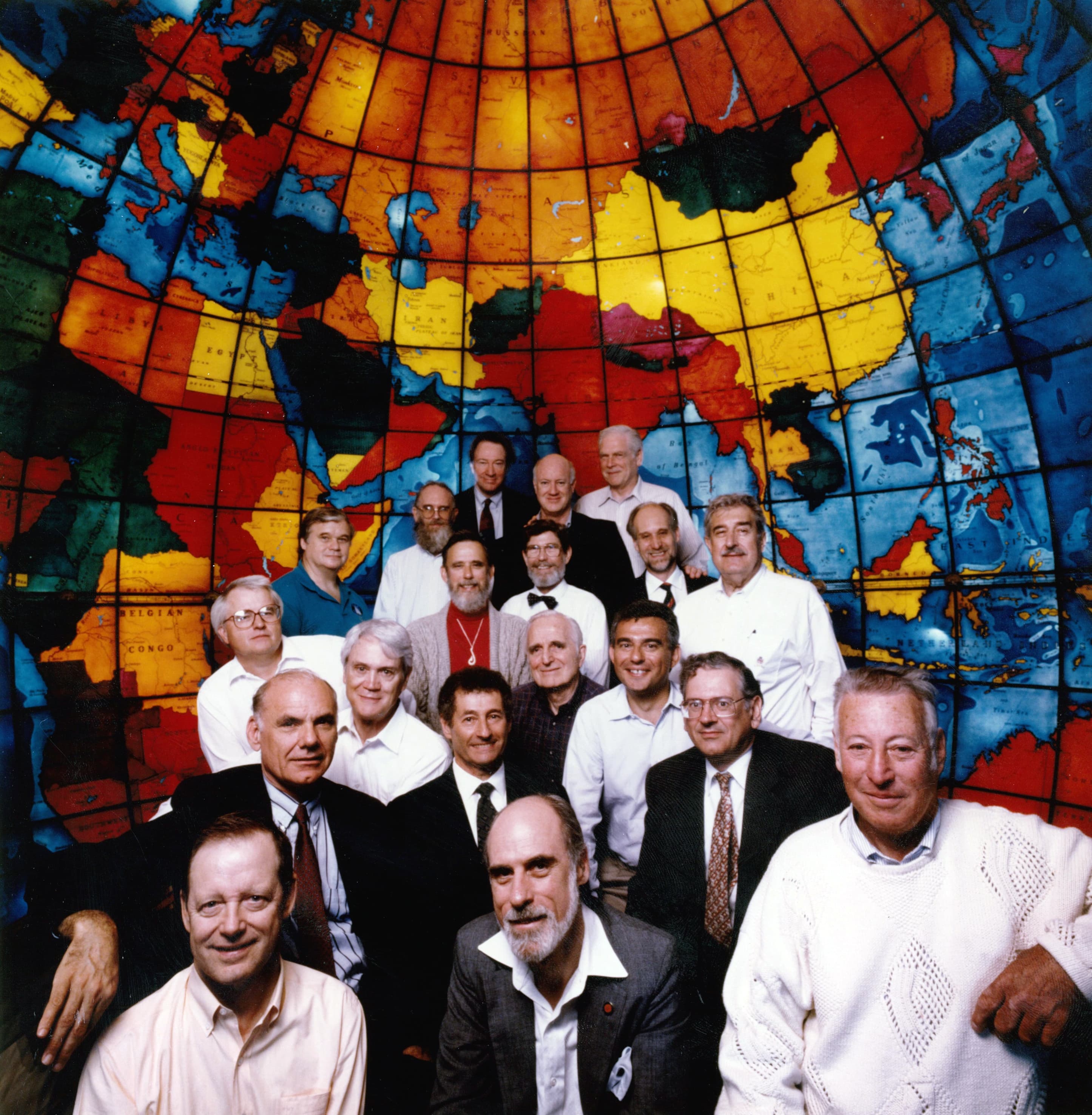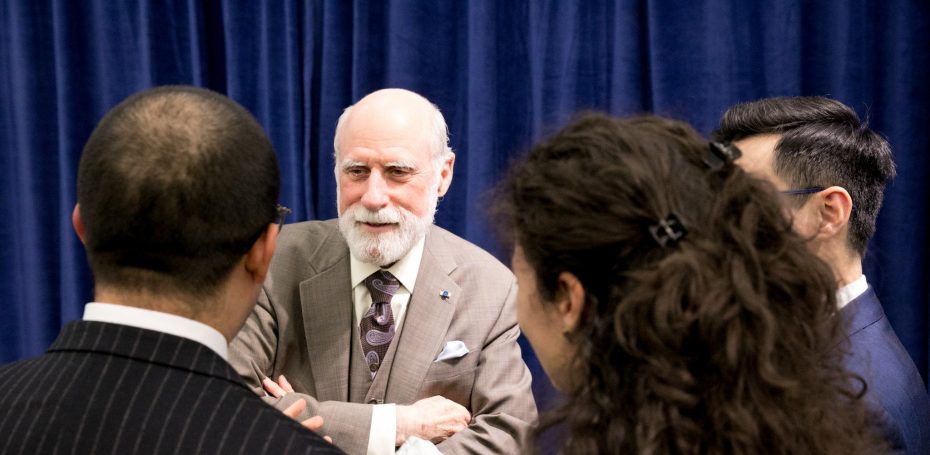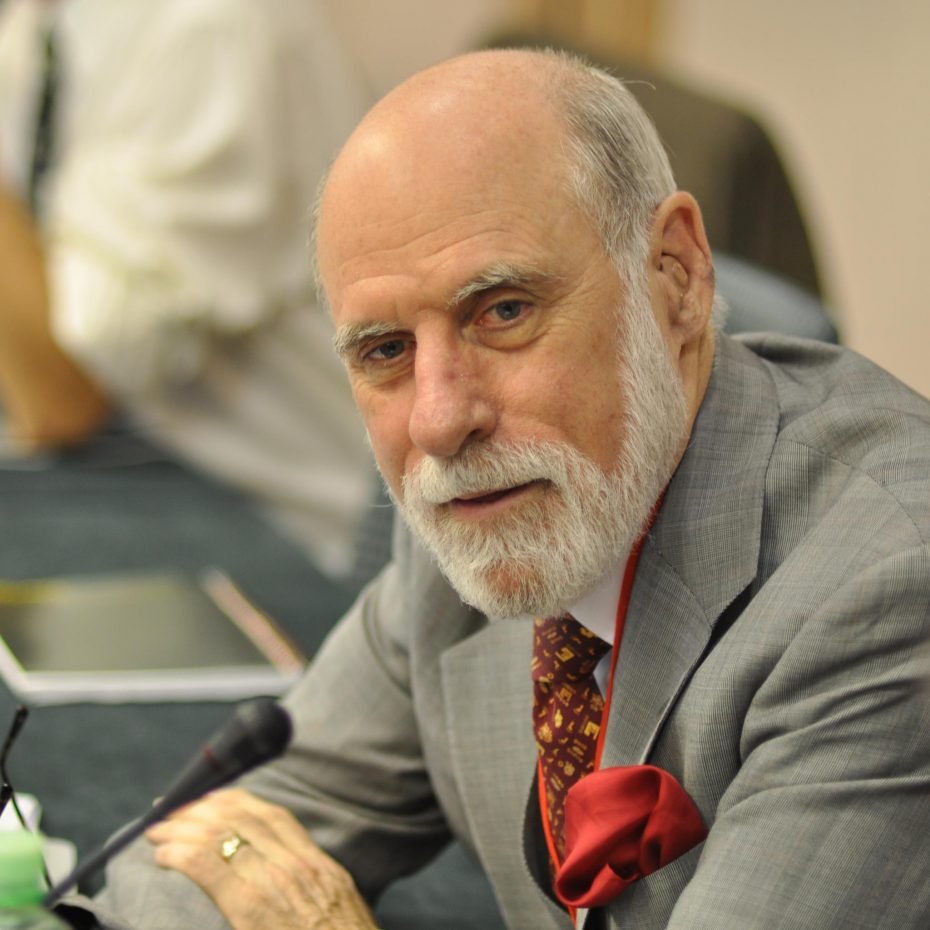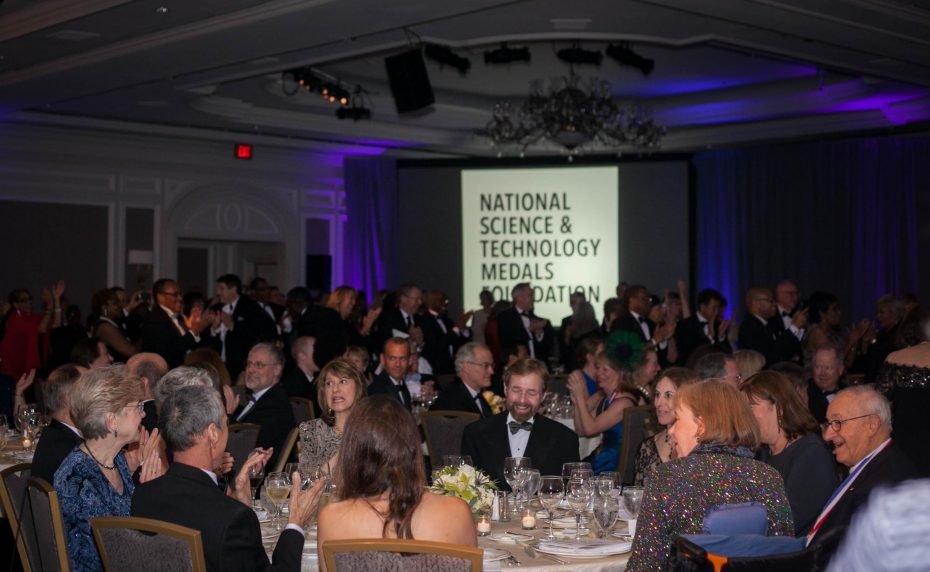Note: At the time of publication, Dr. Cerf was appearing at An Evening With (AEW) event at Georgetown University, hosted by the NSTMF. Click here to follow the NSTMF and receive further updates of additional AEW events.
As one of the fathers of the Internet, Vint Cerf’s work is never done.
The Internet of today is much more complex and integrated in our everyday lives than the initial network he paved the way for in creating the Transmission Control Protocol (TCP) and the Internet Protocol (IP) with Robert Kahn in the 1970s. Looking back, Cerf says there are certainly things he would have done differently.




